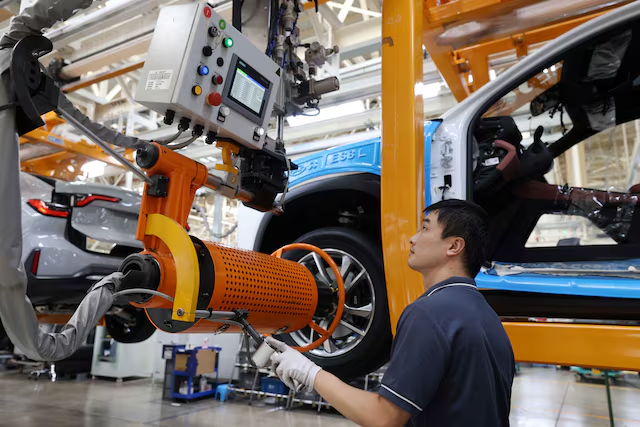China’s manufacturing sector hit a six-month low in August as factory gate prices plummeted and manufacturers struggled to secure orders, according to an official survey released on Saturday. The downturn adds pressure on policymakers to implement targeted stimulus measures aimed at boosting household consumption, as the world’s second-largest economy continues to grapple with sluggish growth.
After a lackluster second quarter, China’s economy lost further momentum in July, leading policymakers to signal a shift away from their usual strategy of funding large infrastructure projects. Instead, the focus is now on introducing fresh stimulus aimed at households. The gloomy sentiment among manufacturers is fueled by a prolonged property crisis, which has dampened domestic demand, and looming Western trade restrictions on Chinese exports, including electric vehicles.
The survey revealed that factory gate prices hit their lowest level in 14 months, with the index plunging to 42 from 46.3 in July. Additionally, both new orders and new export orders remained firmly negative, while manufacturers continued a hiring freeze. Zhiwei Zhang, chief economist at Pinpoint Asset Management, pointed out that the restrictive fiscal policy may be exacerbating the weak economic momentum, suggesting that a more supportive fiscal stance is necessary to stabilize the economy.
As the U.S. economy shows signs of slowing, China’s reliance on exports as a growth driver may not be as dependable as it was in the first half of the year. In response, policy advisers are considering whether Beijing might bring forward part of next year’s bond issuance quota if economic growth does not show signs of recovery by the end of summer. Last year, China implemented a similar strategy, raising the deficit to 3.8% of GDP and frontloading 2024 local government debt quotas to fund infrastructure projects like flood prevention.
This time, however, analysts expect the government to prioritize boosting domestic demand. Retail sales exceeded expectations last month, suggesting that the July decision to allocate around 150 billion yuan ($21 billion) raised through ultra-long treasury bonds for a consumer goods trade-in scheme may be yielding positive results. The August non-manufacturing PMI, which covers services and construction, also improved slightly, alleviating concerns that these sectors might enter a contraction phase.
Nevertheless, economists are awaiting more concrete plans to rejuvenate China’s 1.4 billion-strong consumer market. Any efforts to revive domestic demand will likely face challenges unless the government also addresses the ongoing slump in the property sector, which has heavily impacted consumer spending. With 70% of household wealth tied up in real estate, and home prices expected to fall further in 2024, consumers are likely to remain cautious in their spending.
As Beijing grapples with these complex economic challenges, it remains uncertain whether officials will meet the government’s annual growth target of 5%.
READ MORE:
